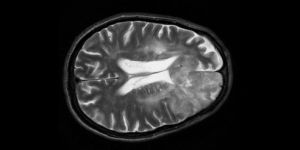Article
Cortical Lesions Reveal New MS Pathway
Author(s):
Researchers at the Cleveland Clinic and the Mayo Clinic have found evidence that multiple sclerosis proceeds from the cerebral cortex on the outside of the brain toward the white matter on the inside of the brain, challenging the generally held theory that the disease proceeds from the inside out.

Researchers at the Cleveland Clinic and the Mayo Clinic have found evidence that multiple sclerosis (MS) proceeds from the cerebral cortex on the outside of the brain toward the white matter on the inside of the brain, challenging the generally held theory that the disease proceeds from the inside out. The researchers’ findings were published in the December 8 edition of the New England Journal of Medicine.
The causes of MS are unknown, but most believe that it occurs when the body’s immune system attacks its own myelin, a fatty insulator of nerve fibers that relay messages between different parts of the brain. However, autopsies of MS patients have found lesions in the cerebral cortex with demyelination but no inflammation, raising the question of how the demyelination occurs.
Since these autopsies are generally performed decades after the start of disease progression, the researchers set out to determine whether cortical lesions that develop at very early stages of MS were inflammatory or not. To do so, they studied white-matter brain biopsies of patients who had suspected tumors but went on to develop MS. They started with 563 biopsy samples, 138 of which contained enough cortex to be studied. Seventy-seven of the patients who had produced these samples provided long-term follow-up data, and 58 of these went on to develop verified MS.
The bits of cortex in collected from patients in the very early stages of MS turned out to have demyelinating lesions similar to those found in autopsies of MS patients, except they were highly inflammatory. The researchers found cortical demyelinating lesions in a very high portion the biopsies and, in 20% of the biopsies, they found that the inflammatory demyelination was entirely in the cortex. They also found inflammation in the meninges, protective membranes that cover the surface of the brain. By combining the patterns of meningeal inflammation and cortical demyelination that they discovered with experimental data from animal models, they determined that MS most likely proceeds from the outside of the brain in, rather than inside out.
Since current therapies for MS may not adequately treat problems in the cortex, understanding how it is involved will be very important for developing new ones. "Measures of cortical damage will enhance enormously the power of clinical trials to determine if new medications address tissue changes of MS in all regions of the brain," said study co-lead author Richard Ransohoff, MD, a neurologist at the Cleveland Clinic, in a press release.





